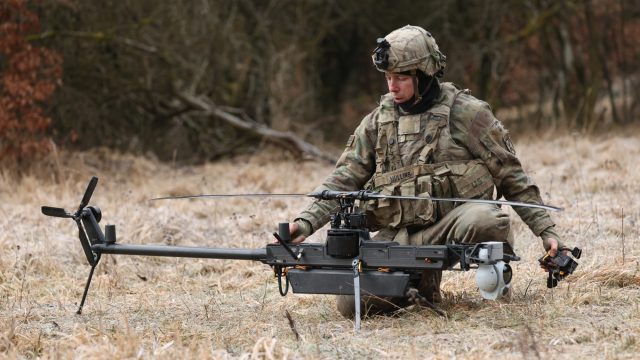
Silicon Valley is “finally getting its chance” to sell its vision to the Pentagon, said Paolo Confino in Fortune. Last month, President Trump signed several executive orders to “streamline how the Department of Defense acquires new defense systems,” putting pressure on existing contractors whose creaky systems are overbudget and overdue. Silicon Valley has been the engine of innovation for the United States for decades. But it has long complained that Washington bureaucracy left tech companies “unable to compete with existing military contractors.” In the Trump administration, tech firms have “found a welcome audience” willing to “take a page from their playbook.” The “ongoing geopolitical tensions and AI arms race with China have only added more urgency to the issue.”
Tech players are rapidly changing the model of warfare, said Lizette Chapman in Bloomberg. “Instead of dozens or even hundreds of soldiers supporting one $100 million system, one soldier using AI software could command dozens of cheap, autonomous weapons.” That, at least, is the promise pitched by Palantir, which recently beat out RTX Corp. for a $178 million mobile military command contract, “the first time a software company” has taken “the lead role on a battlefield system.” Anduril, another California startup, is raising billions of dollars to fuel the manufacturing of “a lengthening list of weapons, wearables, and surveillance systems.” CEO Palmer Luckey is positioning his company as the counter to China’s military, which is rapidly moving from “hyper-sonic and self-guided missiles to drone swarms that can augment or someday replace manned fighter jets.”
“We are entering a new era where machines go to war,” said Zoë Corbyn in The Guardian. This has produced a need for the innovation that the legacy stalwarts, like Boeing and Lockheed Martin, can’t provide. The U.S. now “has more than 1,000 venture-capital-backed companies working on ‘smarter, faster, and cheaper’ defense,” like drones that travel underwater, microwave-ray guns, and even self-flying fighter jets. But some experts worry that the money pouring into defense tech— $155 billion between 2021 and 2024—could push the U.S. and these companies toward wanting “to use them in war.”
Just two years ago, said The Economist, Castelion, a company developing hypersonic missiles, “couldn’t open a bank account in Silicon Valley because of the stigma attached to making weapons.” But “defense” is no longer such a dirty word. The war in Ukraine helped change some attitudes. The deployment of “smaller weapons, notably drones,” has created an opening for innovative upstarts. The transformation also reflects a broader cultural shift among tech leaders who have embraced Trump. Gone is the support for environmental and social causes. Patriotism is “the new corporate purpose.”
Tech companies are replacing military contractors with AI, drones and battlefield systems






